
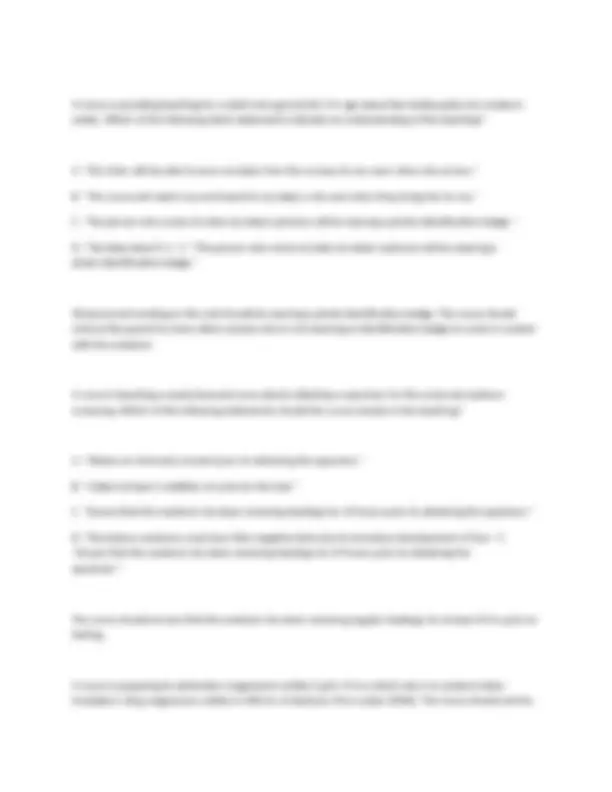
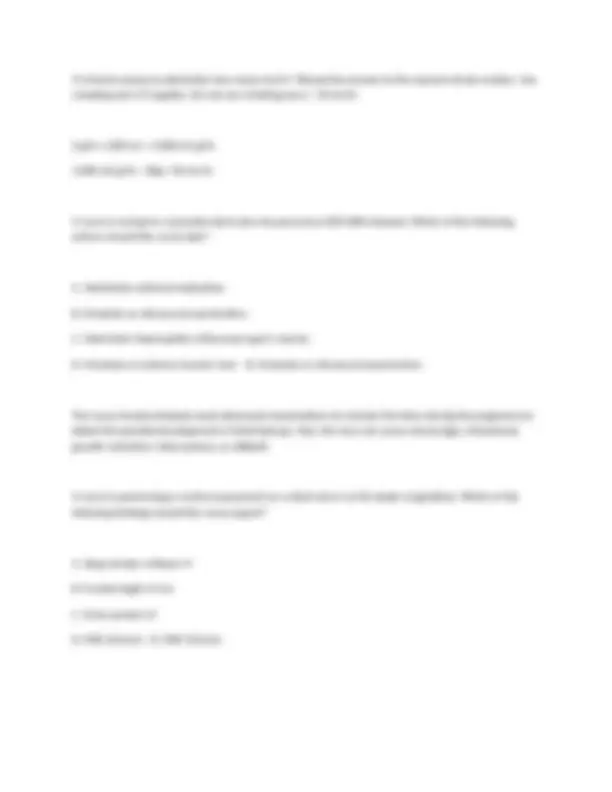
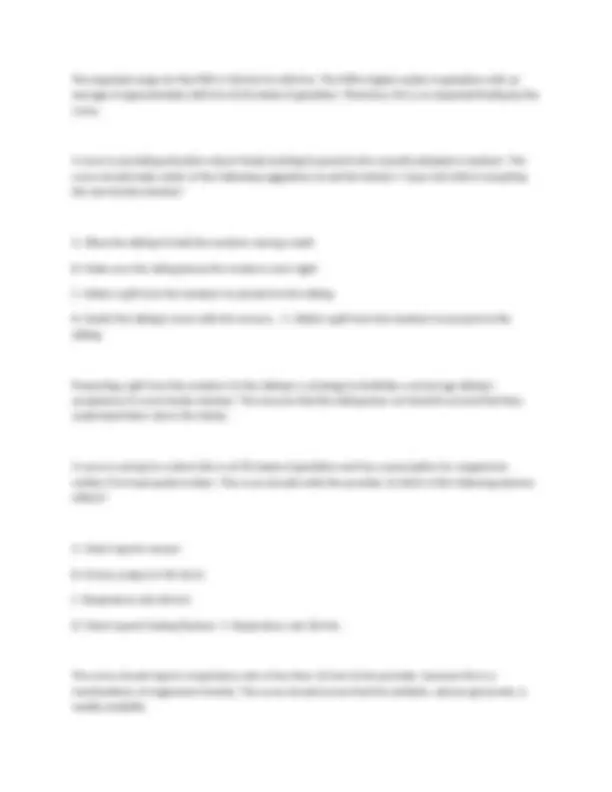
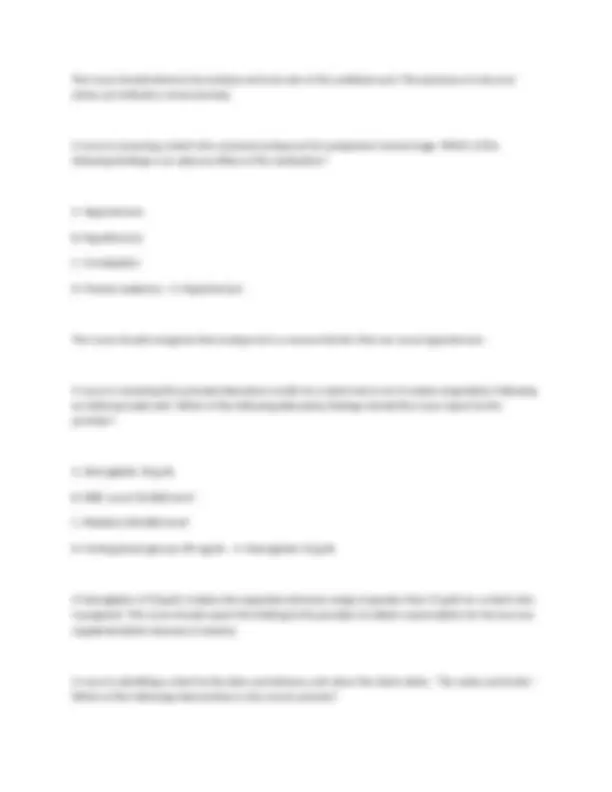
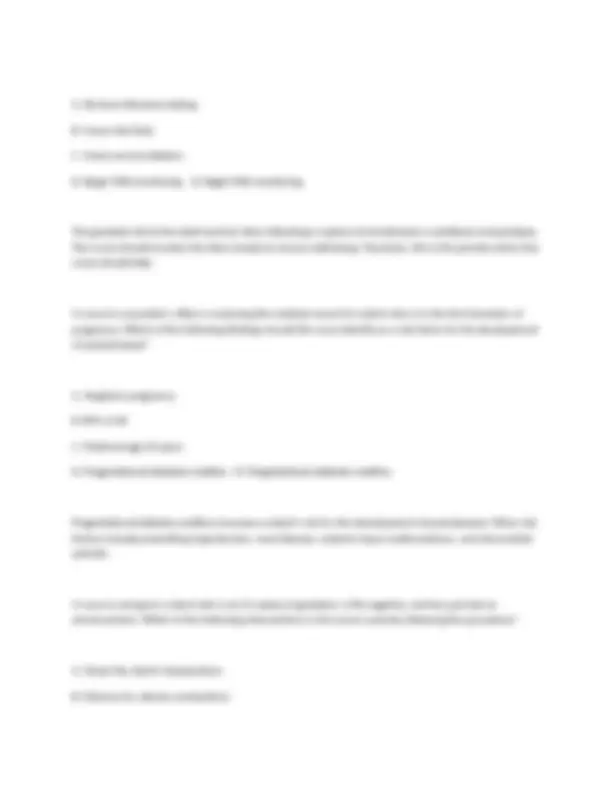
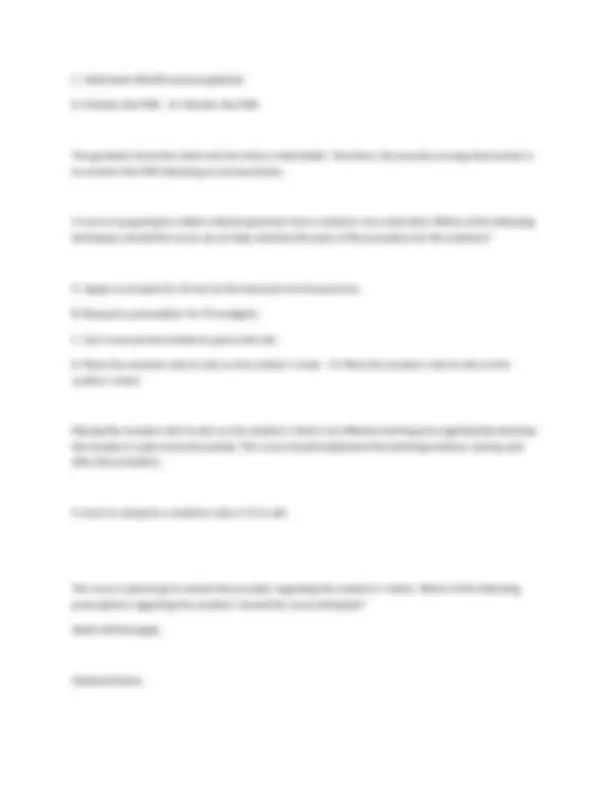
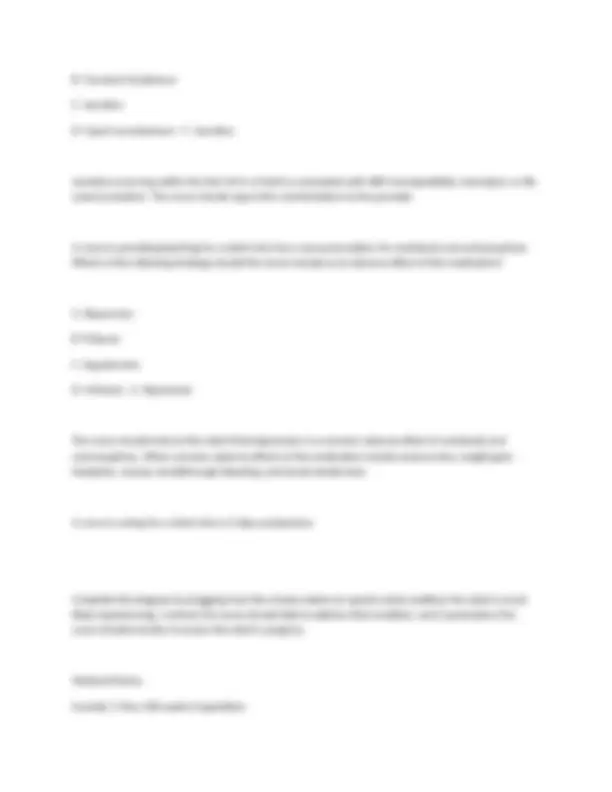
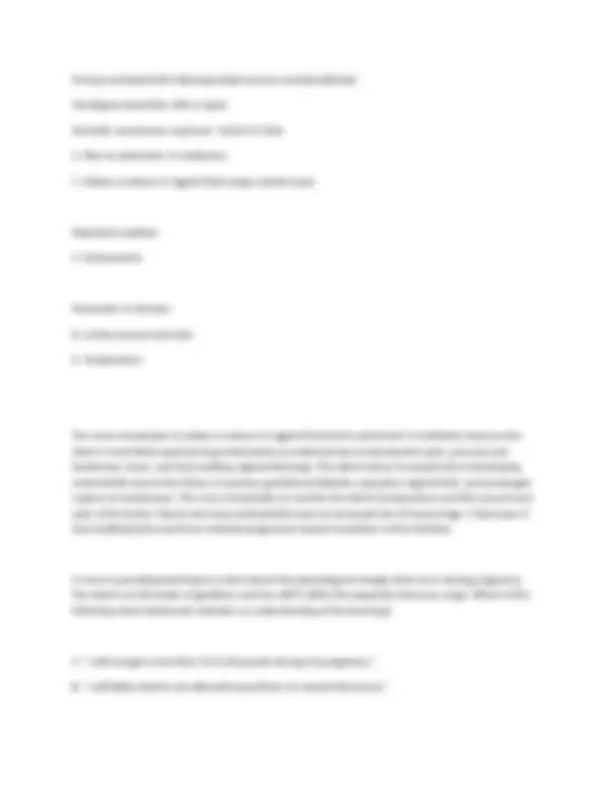
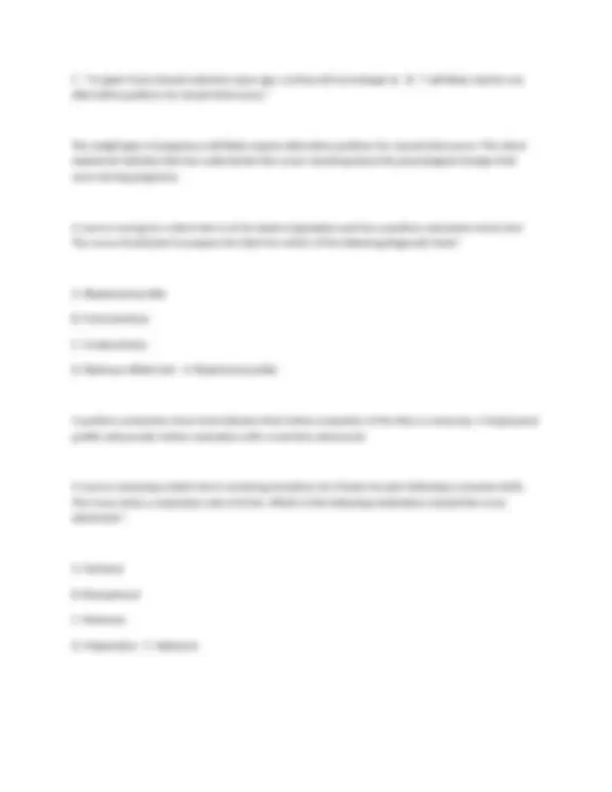
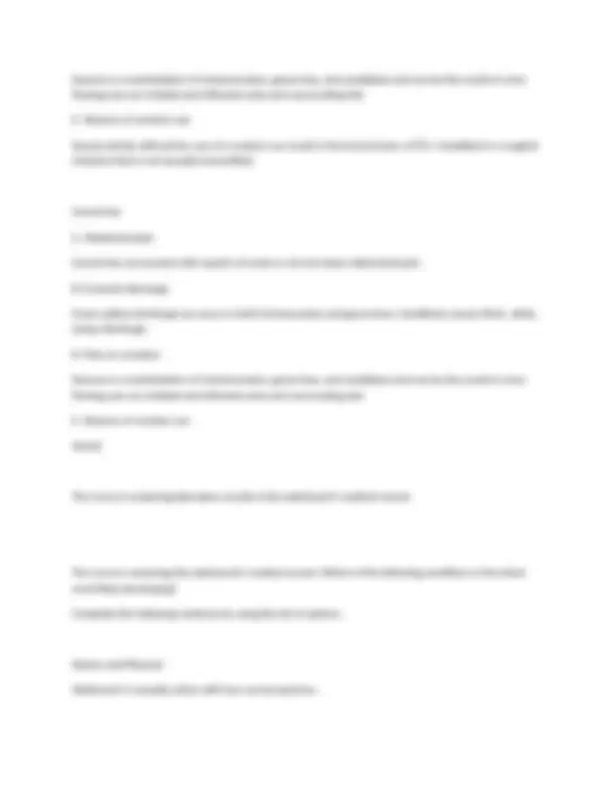
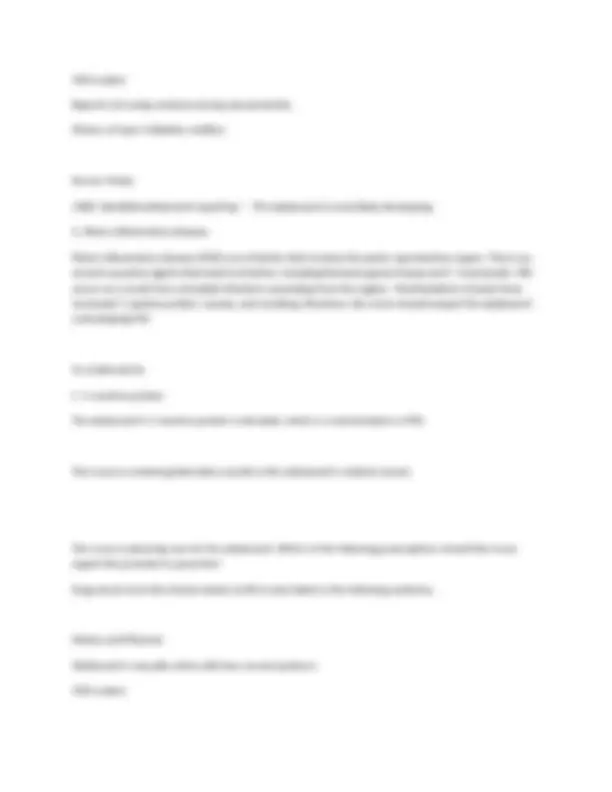
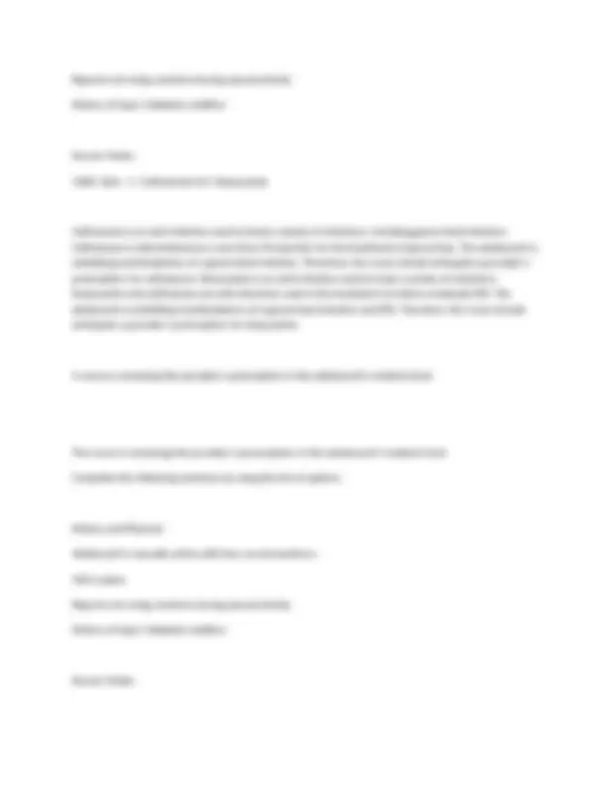
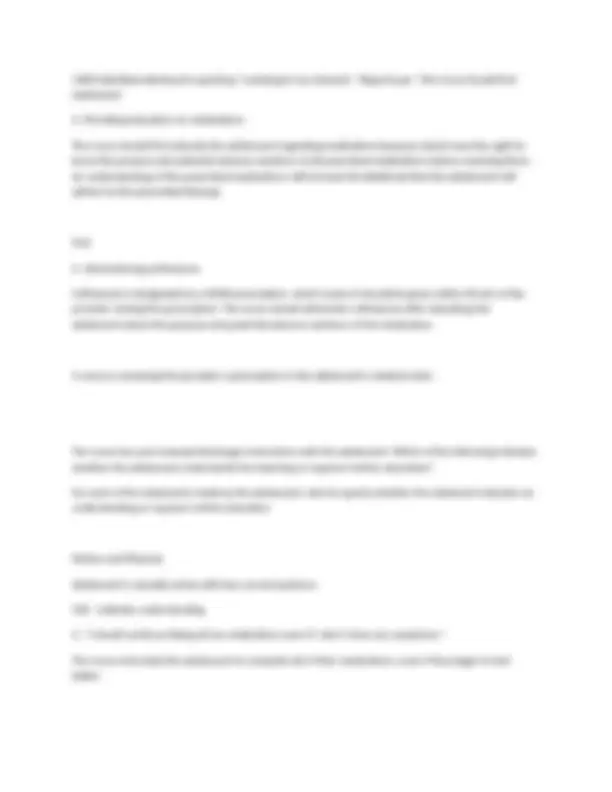
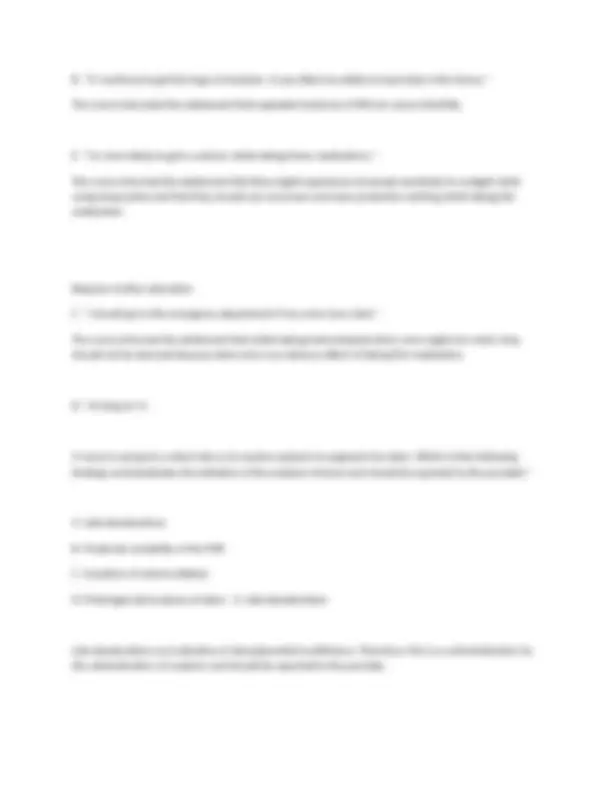
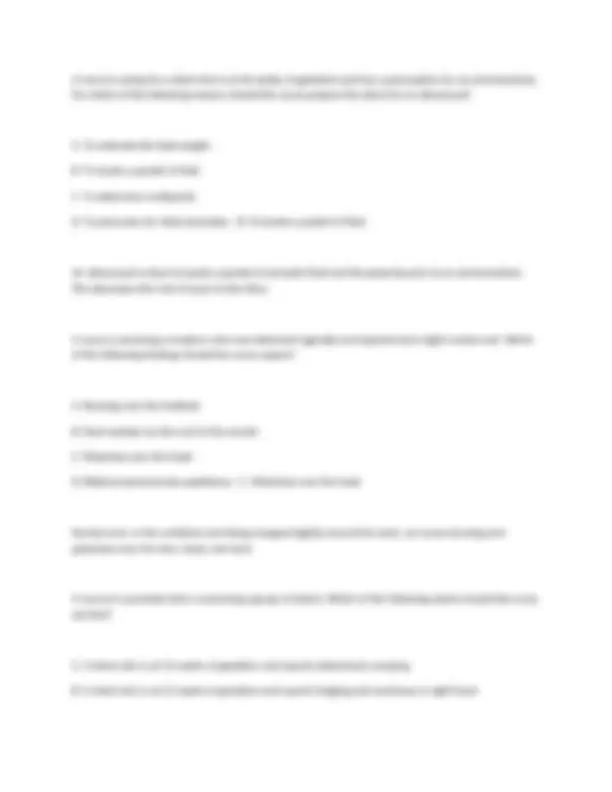
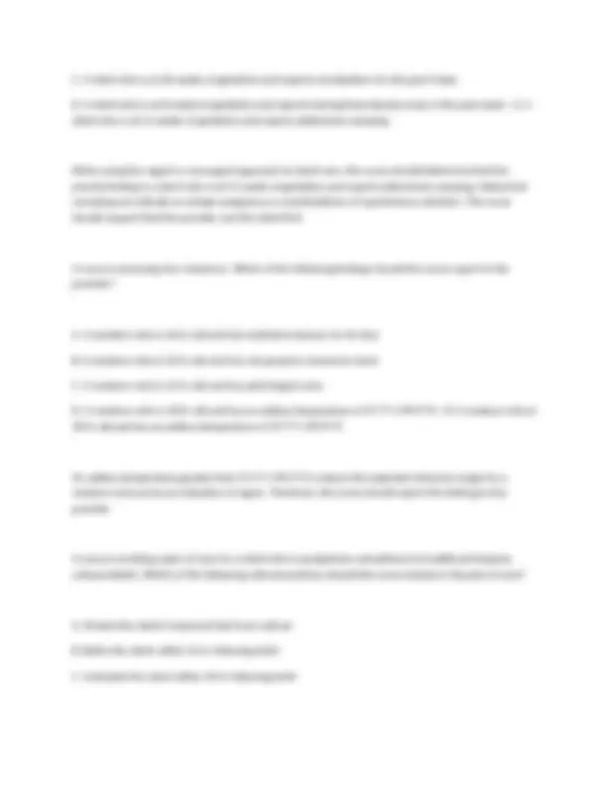
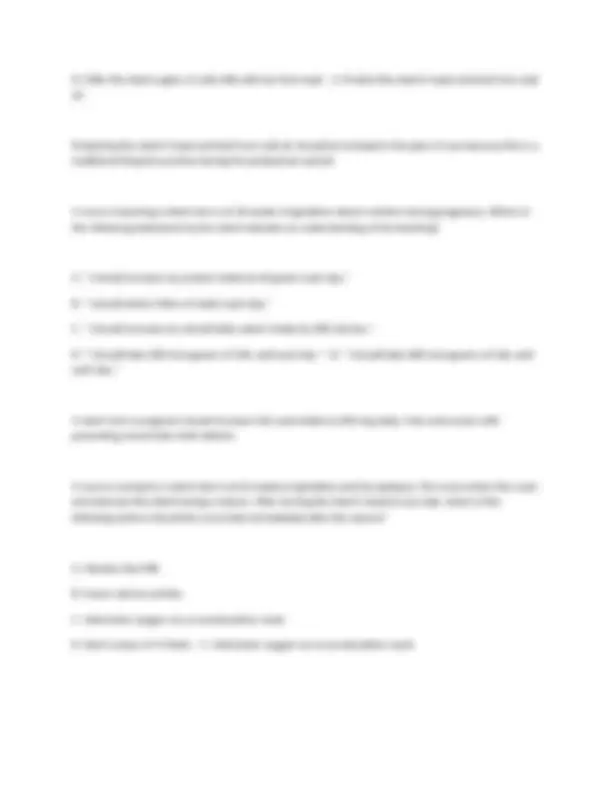
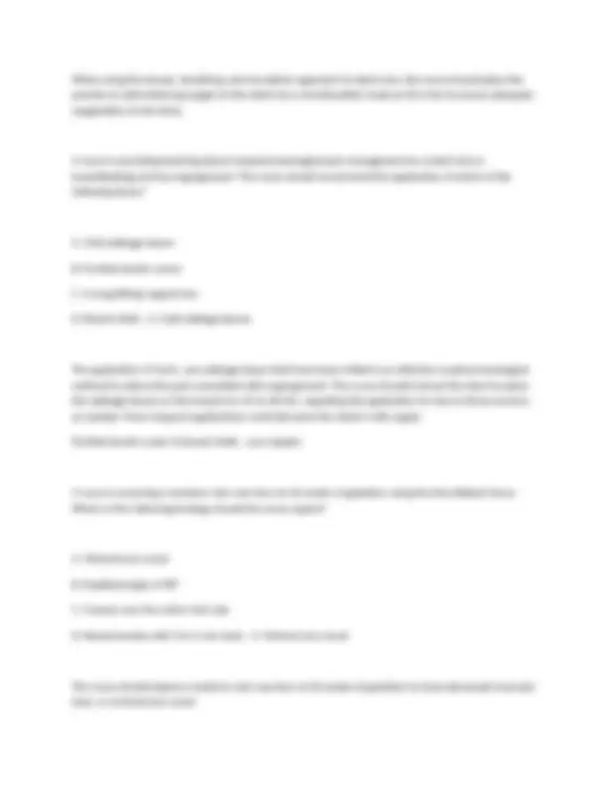
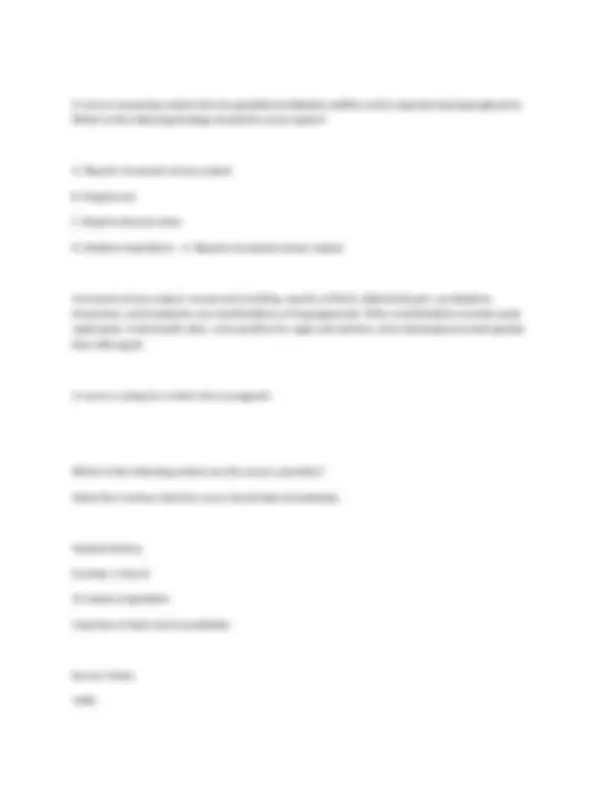
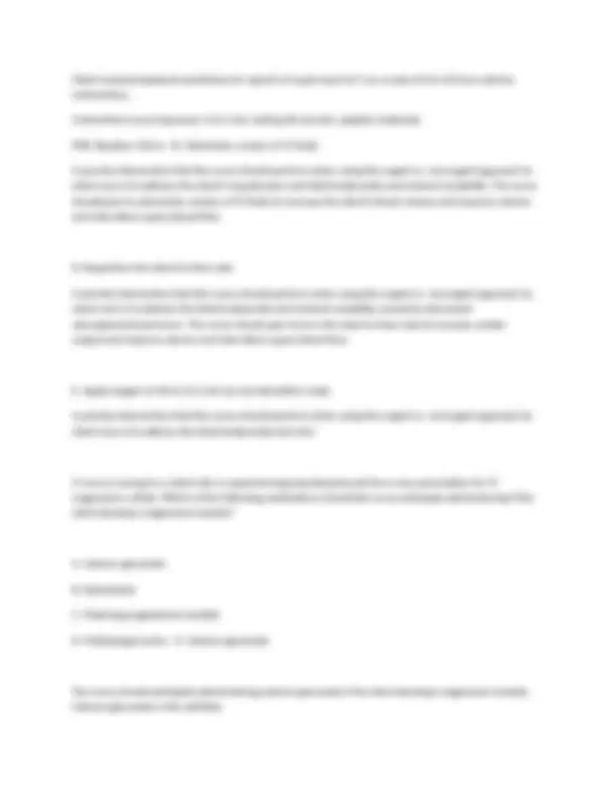
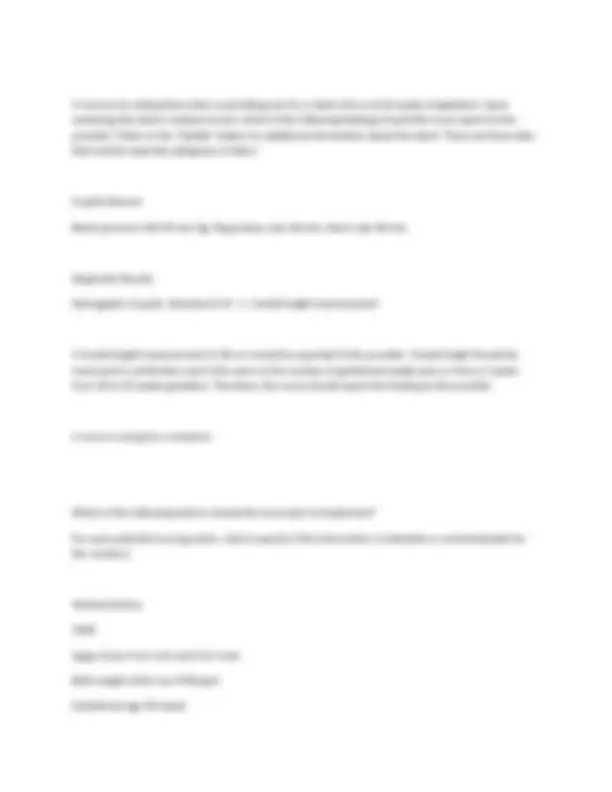
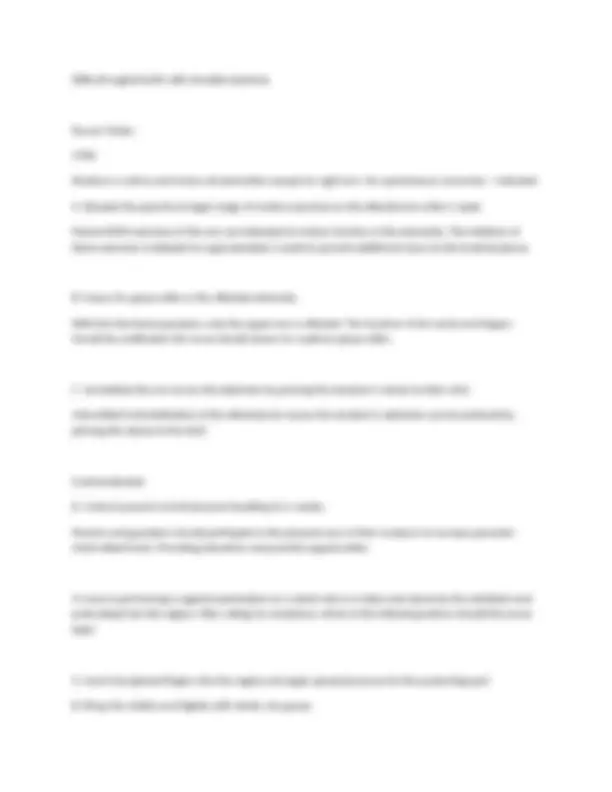
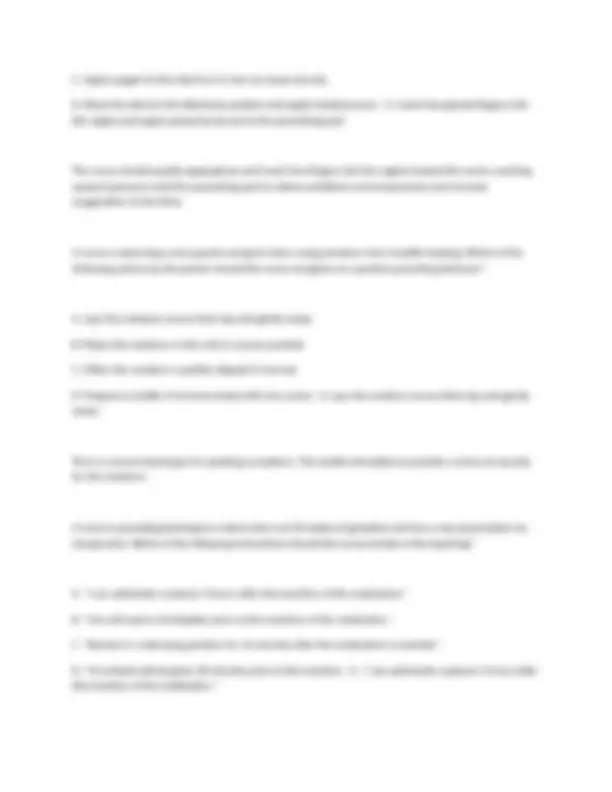
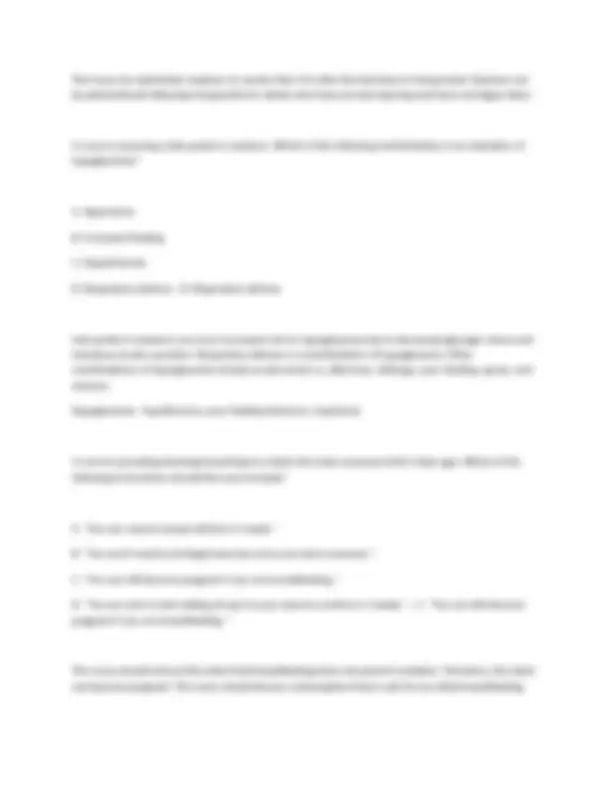
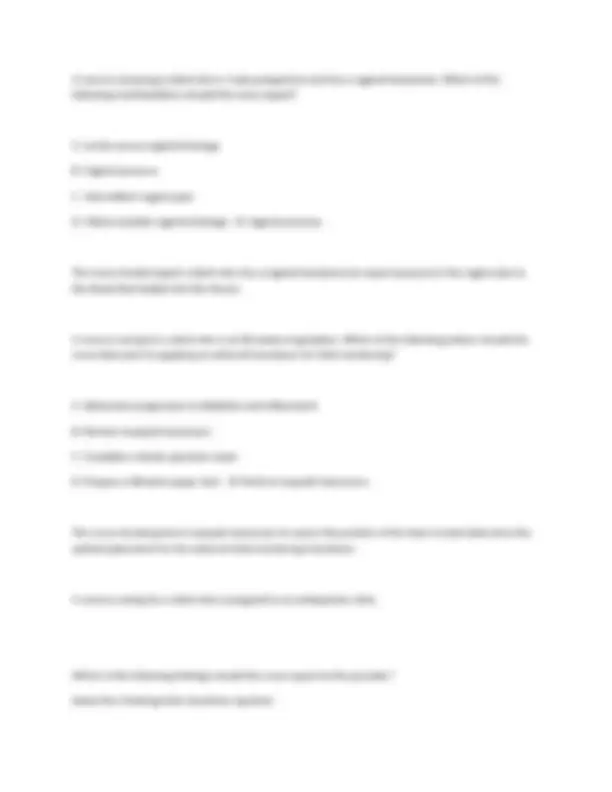
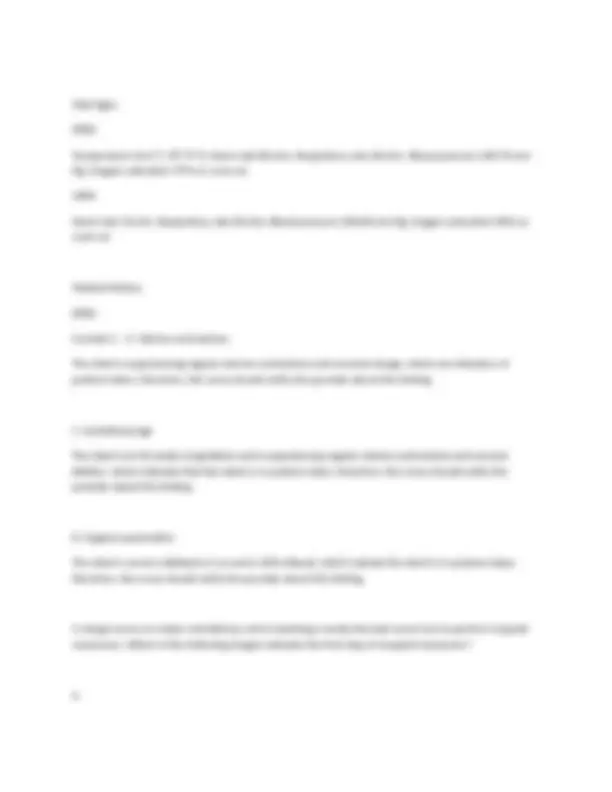
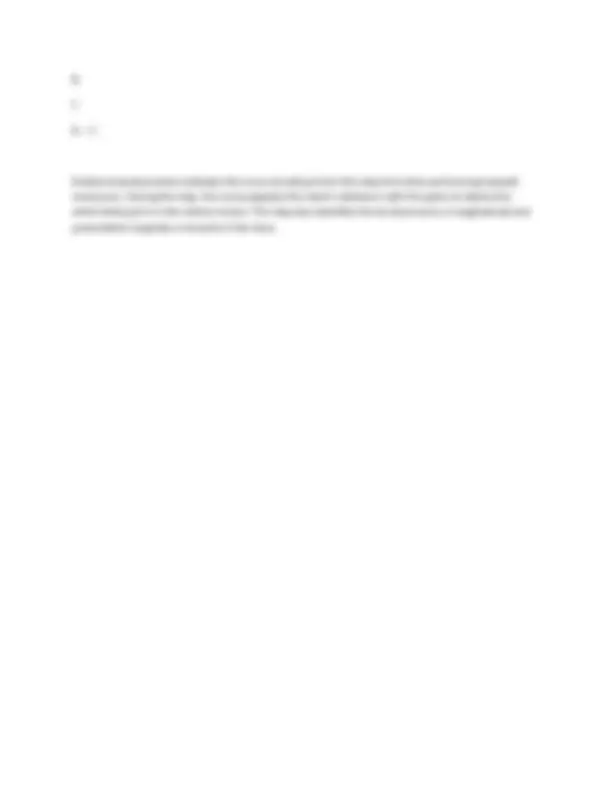


Study with the several resources on Docsity

Earn points by helping other students or get them with a premium plan


Prepare for your exams
Study with the several resources on Docsity

Earn points to download
Earn points by helping other students or get them with a premium plan
Community
Ask the community for help and clear up your study doubts
Discover the best universities in your country according to Docsity users
Free resources
Download our free guides on studying techniques, anxiety management strategies, and thesis advice from Docsity tutors
ATI RN Maternal Newborn Online Practice 2019 A with NGN 2024 to 2025
Typology: Exams
1 / 35

This page cannot be seen from the preview
Don't miss anything!




























A nurse is caring for a client who is at 24 weeks of gestation and has a suspected placental abruption. Which of the following laboratory tests should the nurse expect the provider to prescribe? A. Kleihauer-Betke test B. Progesterone serum level C. Lecithin/sphingomyelin (L/S) ratio D. Maternal Alpha-fetoprotein (AFP) - A. Kleihauer-Betke test The nurse should expect the provider to prescribe a Kleihauer-Betke test for a client who has suspected placental abruption to determine if fetal blood is in maternal circulation. This test is useful to determine if Rho-(D) immune globulin therapy should be administered to a client who is Rh-negative. A nurse is demonstrating to a client how to bathe their newborn. In which order should the nurse perform the following actions? (Move the steps into the box on the right, placing them in the selected order of performance. Use all the steps.) A. Clean the newborn's diaper area. B. Wash the newborn's neck by lifting the newborn's chin. C. Wipe the newborn's eyes from the inner canthus outward. D. Cleanse the skin around the newborn's umbilical cord stump. E. Wash the newborn's legs and feet. - C. Wipe the newborn's eyes from the inner canthus outward. B. Wash the newborn's neck by lifting the newborn's chin. D. Cleanse the skin around the newborn's umbilical cord stump. E. Wash the newborn's legs and feet.
A. Clean the newborn's diaper area. The nurse should demonstrate how to bathe a newborn by using a head to toe, clean to dirty, approach. Therefore, the nurse should first wipe the newborn's eyes from the inner canthus outward using plain water. The nurse should then wash the newborn's neck by lifting the newborn's chin. Next, the nurse should cleanse the skin around the umbilical cord stump followed by washing the newborn's legs and feet. The last step of the bath should be to clean the newborn's diaper area. A nurse is caring for a client who has hyperemesis gravidarum and is receiving IV fluid replacement. Which of the following findings should the nurse report to the provider? A. BUN 25 mg/dL B. Serum creatinine 0.8 mg/dL C. Urine output of 280 mL within 8 hr D. Urine negative for ketones - A. BUN 25 mg/dL The nurse should report an elevated BUN to the provider since it can indicate dehydration. A nurse is assessing a client who is at 38 weeks of gestation during a weekly prenatal visit. Which of the following findings should the nurse report to the provider? A. Blood pressure 136/88 mm Hg B. Report of insomnia C. Weight gain of 2.2 kg (4.8 lb) D. Report of Braxton Hicks contractions - C. Weight gain of 2.2 kg (4.8 lb) A weight gain of 2.2 kg (4.8 lb) in a week is above the expected reference range and could indicate complications. Therefore, this finding should be reported to the provider.
IV infusion pump to administer how many mL/hr? (Round the answer to the nearest whole number. Use a leading zero if it applies. Do not use a trailing zero.) - 50 mL/hr 2 g/hr x 500 mL = 1,000 mL/g/hr 1,000 mL/g/hr / 20g = 50 mL/hr A nurse is caring for a prenatal client who has parvovirus B19 (fifth disease). Which of the following actions should the nurse take? A. Administer antiviral medication. B. Schedule an ultrasound examination. C. Administer Haemophilus influenzae type b vaccine. D. Schedule an indirect Coombs' test. - B. Schedule an ultrasound examination. The nurse should schedule serial ultrasound examinations to monitor the fetus during the pregnancy to detect the possible development of fetal hydrops. Also, the virus can cause miscarriage, intrauterine growth restriction, fetal anemia, or stillbirth. A nurse is performing a routine assessment on a client who is at 18 weeks of gestation. Which of the following findings should the nurse expect? A. Deep tendon reflexes 4+ B. Fundal height 14 cm C. Urine protein 2+ D. FHR 152/min - D. FHR 152/min
The expected range for the FHR is 110/min to 160/min. The FHR is higher earlier in gestation with an average of approximately 160/min at 20 weeks of gestation. Therefore, this is an expected finding by the nurse. A nurse is providing education about family bonding to parents who recently adopted a newborn. The nurse should make which of the following suggestions to aid the family's 7-year-old child in accepting the new family member? A. Allow the sibling to hold the newborn during a bath. B. Make sure the sibling kisses the newborn each night. C. Obtain a gift from the newborn to present to the sibling. D. Switch the sibling's room with the nursery. - C. Obtain a gift from the newborn to present to the sibling. Presenting a gift from the newborn to the sibling is a strategy to facilitate a school-age sibling's acceptance of a new family member. This ensures that the sibling does not feel left out and that they understand their role in the family. A nurse is caring for a client who is at 30 weeks of gestation and has a prescription for magnesium sulfate IV to treat preterm labor. The nurse should notify the provider of which of the following adverse effects? A. Client reports nausea B. Urinary output of 40 mL/hr C. Respiratory rate 10/min D. Client reports feeling flushed - C. Respiratory rate 10/min The nurse should report a respiratory rate of less than 12/min to the provider, because this is a manifestation of magnesium toxicity. The nurse should ensure that the antidote, calcium gluconate, is readily available.
0700: Heart rate 156/minRespiratory rate 58/minTemperature 37.2° C (98.9° F) Oxygen saturation 98% on room air 1100: Heart rat - D. Central nervous system findings The newborn is displaying inconsolability, high-pitched cry, increased muscle tone, tremors, hyperactive Moro reflex, and excessive sucking. These findings are manifestations of NAS and should be reported to the provider. E. Gastrointestinal findings The newborn is displaying poor feeding and loose stools. These findings are manifestations of NAS and should be reported to the provider. A nurse is performing a physical assessment of a newborn upon admission to the nursery. Which of the following manifestations should the nurse expect? (Select all that apply.) A. Yellow sclera B. Acrocyanosis C. Posterior fontanel larger than the anterior fontanel D. Positive Babinski reflex E. Two umbilical arteries visible - B. Acrocyanosis Acrocyanosis is an expected finding for at least the first 24 hr following birth. Poor peripheral perfusion leads to bluish discoloration in the newborn's hands and feet. D. Positive Babinski reflex Newborns should exhibit a positive Babinski sign following birth. The nurse should stroke the newborn's foot upward from the heel to the toes. The toes should hyperextend, and dorsal flexion of the big toe should occur. The absence of this finding requires neurological evaluation. The Babinski reflex is no longer present after 1 year of age. E. Two umbilical arteries visible
The nurse should observe two arteries and one vein in the umbilical cord. The presence of only one artery can indicate a renal anomaly. A nurse is assessing a client who received carboprost for postpartum hemorrhage. Which of the following findings is an adverse effect of this medication? A. Hypertension B. Hypothermia C. Constipation D. Muscle weakness - A. Hypertension The nurse should recognize that carboprost is a vasoconstrictor that can cause hypertension. A nurse is reviewing the prenatal laboratory results for a client who is at 12 weeks of gestation following an initial prenatal visit. Which of the following laboratory findings should the nurse report to the provider? A. Hemoglobin 10 g/dL B. WBC count 10,000/mm C. Platelets 250,000/mm D. Fasting blood glucose 90 mg/dL - A. Hemoglobin 10 g/dL A hemoglobin of 10 g/dL is below the expected reference range of greater than 11 g/dL for a client who is pregnant. The nurse should report this finding to the provider to obtain a prescription for ferrous iron supplementation because of anemia. A nurse is admitting a client to the labor and delivery unit when the client states, "My water just broke." Which of the following interventions is the nurse's priority?
C. Administer Rho(D) immune globulin. D. Monitor the FHR. - D. Monitor the FHR. The greatest risk to this client and her fetus is fetal death. Therefore, the priority nursing intervention is to monitor the FHR following an amniocentesis. A nurse is preparing to collect a blood specimen from a newborn via a heel stick. Which of the following techniques should the nurse use to help minimize the pain of the procedure for the newborn? A. Apply a cool pack for 10 min to the heel prior to the puncture. B. Request a prescription for IM analgesic. C. Use a manual lance blade to pierce the skin. D. Place the newborn skin to skin on the mother's chest. - D. Place the newborn skin to skin on the mother's chest. Placing the newborn skin to skin on the mother's chest is an effective technique to significantly decrease the newborn's pain level and anxiety. The nurse should implement this technique before, during, and after the procedure. A nurse is caring for a newborn who is 72 hr old. The nurse is planning to contact the provider regarding the newborn's status. Which of the following prescriptions regarding the newborn should the nurse anticipate? Select all that apply. Medical History
Newborn delivered by repeat cesarean birth at 40 weeks of gestation.Birth weight 7 lb 12 oz (3, g)Apgar scores 8 at 1 min and 9 at 5 minMaternal history of methadone use during pregnancy. Vital Signs 0700: Heart rate 156/min, Respiratory - B. Administer scheduled doses of oral morphine. The nurse should administer scheduled doses of oral morphine to the newborn to decrease manifestations of withdrawal. The dosage of the medication is adjusted based on the NAS score of the newborn. D. Maintain a low-stimulus environment. Supportive care for a newborn who has NAS includes maintaining a low-stimulus environment to help prevent exacerbation of withdrawal manifestations. E. Initiate neonatal abstinence sydrome (NAS) scoring. The nurse should initiate NAS scoring to evaluate the severity of the newborn's withdrawal manifestations. The score obtained will be used to evaluate the need to titrate the prescription for the morphine dosage. A nurse is admitting a client who is in labor. The client admits to recent cocaine use. For which of the following complications should the nurse assess? A. Abruptio placenta B. Placenta previa C. Preeclampsia D. Maternal bradycardia - A. Abruptio placenta Cocaine use increases the risk for vasoconstriction and possible abruptio placenta.
B. Transient strabismus C. Jaundice D. Caput succedaneum - C. Jaundice Jaundice occurring within the first 24 hr of birth is associated with ABO incompatibility, hemolysis, or Rh- isoimmunization. The nurse should report this manifestation to the provider. A nurse is providing teaching for a client who has a new prescription for combined oral contraceptives. Which of the following findings should the nurse include as an adverse effect of this medication? A. Depression B. Polyuria C. Hypotension D. Urticaria - A. Depression The nurse should instruct the client that depression is a common adverse effect of combined oral contraceptives. Other common adverse effects of the medication include amenorrhea, weight gain, headache, nausea, breakthrough bleeding, and breast tenderness. A nurse is caring for a client who is 3 days postpartum. Complete the diagram by dragging from the choices below to specify what condition the client is most likely experiencing, 2 actions the nurse should take to address that condition, and 2 parameters the nurse should monitor to assess the client's progress. Medical History Gravida 1, Para 138 weeks of gestation
Forceps-assisted birth following failed vacuum-assisted attempt. 3rd degree laceration with a repair Amniotic membranes ruptured - Action to Take A. Plan to administer IV antibiotics. C. Obtain a culture of vaginal fluid using a sterile swab. Potential Condition A. Endometrisis Parameter to Monitor D. Lochia amount and odor E. Temperature The nurse should plan to obtain a culture of vaginal fluid and to administer IV antibiotics because the client is most likely experiencing endometritis as evidenced by increased pelvic pain, pressure and tenderness, fever, and foul-smelling vaginal discharge. The client had an increased risk of developing endometritis due to the history of anemia, gestational diabetes, operative vaginal birth, and prolonged rupture of membranes. The nurse should plan to monitor the client's temperature and the amount and odor of the lochia. Clients who have endometritis have an increased risk of hemorrhage. A decrease of foul-smelling lochia and fever indicate progression toward resolution of the infection. A nurse is providing teaching to a client about the physiological changes that occur during pregnancy. The client is at 10 weeks of gestation and has a BMI within the expected reference range. Which of the following client statements indicates an understanding of the teaching? A. "I will not gain more than 15 to 20 pounds during my pregnancy." B. "I will likely need to use alternative positions for sexual intercourse."
Morphine is a common opioid analgesic used for postoperative pain management that can cause central nervous system depression and can cause respiratory depression. The nurse should administer naloxone, an opioid antagonist, to reverse the opioid-induced respiratory depression in the client. A nurse in a clinic is caring for a 16-year-old adolescent. Which of the following findings should the nurse report to the provider? Select all that apply. History and Physical Adolescent is sexually active with two current partners. IUD in place Reports not using condoms during sexual activity. History of type 1 diabetes mellitus Nurses' Notes 1300:Admitted adolescent reporting "cramping in my stomach." Reports pain as a 4 on 0 to 10 pain scale and describes pain as constant and dull. Repor - A. Abdominal assessment Abdominal tenderness with palpation is not an expected finding with an abdominal assessment; therefore, the nurse should report this finding to the provider. B. Vaginal discharge Greenish vaginal discharge indicates that the adolescent has an infection, which is not an expected finding; therefore, the nurse should report this finding to the provider. D. Temperature
The client's temperature of 38.3° C (101° F) is above the expected reference range. An elevated temperature could signal infection or inflammation; therefore, the nurse should report this finding to the provider. E. Dyspareunia Dyspareunia is painful intercourse, which can be associated with STIs; therefore, the nurse should report this finding to the provider. F. Condom usage Sexual activity without the use of condoms increases the risk of contracting STIs; therefore, the nurse should report this finding to the provider. A nurse in a clinic is caring for a 16-year-old adolescent. Which of the following conditions should the nurse identify as being consistent with the adolescent's assessment findings? For each finding, click to specify if the assessment findings are consistent with trichomoniasis, gonorrhea, or candidiasis. Each finding may support more than one disease process. History and Physical Adolescent is sexually active with two current partners. IUD in place Reports not using condoms during sexual - Trichomoniasis B. Greenish discharge Green-yellow discharge can occur in both trichomoniasis and gonorrhea. Candidiasis causes thick, white, lumpy discharge. D. Pain on urination
IUD in place Reports not using condoms during sexual activity. History of type 1 diabetes mellitus Nurses' Notes 1300: Admitted adolescent reporting " - The adolescent is most likely developing A. Pelvic inflammatory disease Pelvic inflammatory disease (PID) is an infection that involves the pelvic reproductive organs. There are several causative agents that lead to infection, including Neisseria gonorrhoeae and C. trachomatis. PID occurs as a result from untreated infections ascending from the vagina.. Manifestations include fever, increased C-reactive protein, nausea, and vomiting; therefore, the nurse should suspect the adolescent is developing PID As evidenced by C. C-reactive protein The adolescent's C-reactive protein is elevated, which is a manifestation of PID. The nurse is reviewing laboratory results in the adolescent's medical record. The nurse is planning care for the adolescent. Which of the following prescriptions should the nurse expect the provider to prescribe? Drag words from the choices below to fill in each blank in the following sentence. History and Physical Adolescent is sexually active with two current partners. IUD in place
Reports not using condoms during sexual activity. History of type 1 diabetes mellitus Nurses' Notes 1300: Adm - C. Ceftriaxone & E. Doxycycline Ceftriaxone is an anti-infective used to treat a variety of infections, including gonorrheal infection. Ceftriaxone is administered as a one-time IM injection for the treatment of gonorrhea. The adolescent is exhibiting manifestations of a gonorrheal infection. Therefore, the nurse should anticipate a provider's prescription for ceftriaxone. Doxycycline is an anti-infective used to treat a variety of infections. Doxycycline and ceftriaxone are anti-infectives used in the treatment of mild to moderate PID. The adolescent is exhibiting manifestations of a gonorrheal infection and PID. Therefore, the nurse should anticipate a provider's prescription for doxycycline. A nurse is reviewing the provider's prescription in the adolescent's medical chart. The nurse is reviewing the provider's prescriptions in the adolescent's medical chart. Complete the following sentence by using the list of options. History and Physical Adolescent is sexually active with two current partners. IUD in place Reports not using condoms during sexual activity. History of type 1 diabetes mellitus Nurses' Notes